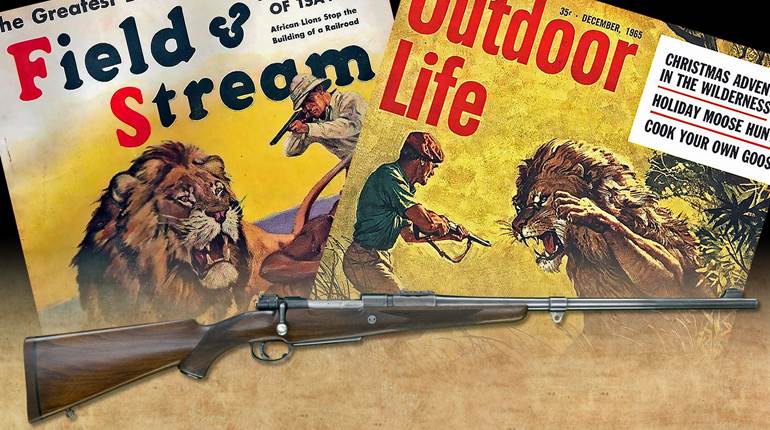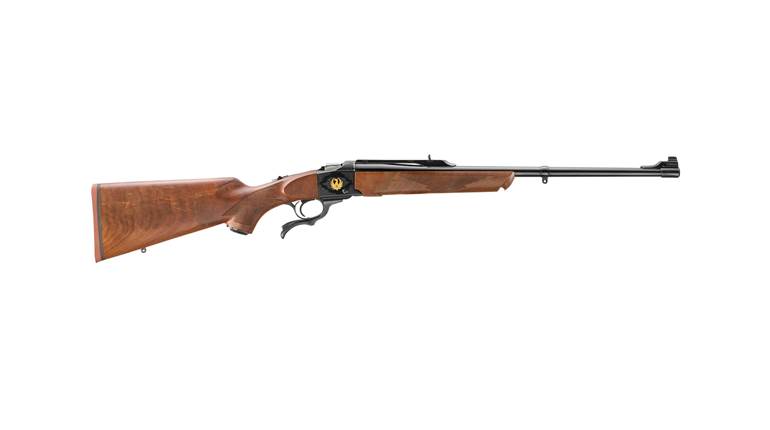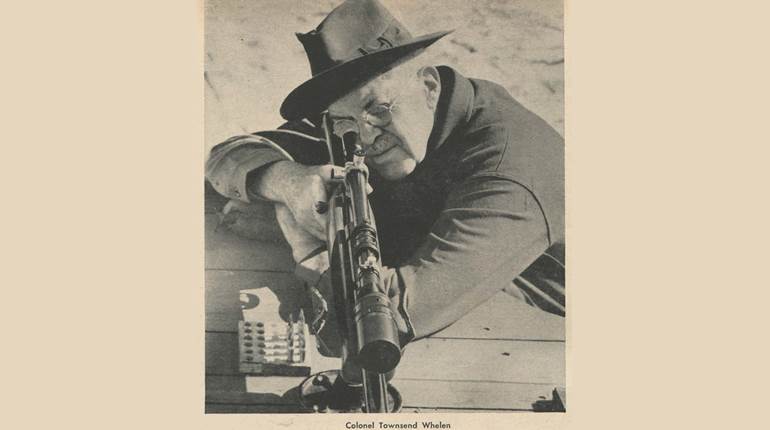
The 1920s were a fascinating time in American history. Full of pride and bravado after saving the world from the Kaiser, Americans led the way in the industrial revolution, as well as a cultural upheaval. Shooters were caught up in the mix, too, with gunnies everywhere experimenting with new cartridge designs. One popular experimenter and writer of the day was Ned H. Roberts. He, as well as some other experimenters, was consumed with the idea of what were called “quarter-bore cartridges,” cartridges of .25 caliber. The idea was to have one rifle capable of being shot all day at varmints, yet have enough power and range to take deer-sized game. Roberts-after much experimentation-settled on the 7x57 Mauser as a parent case for his quarter-bore brainchild.
Custom rifles from Niedner and Griffin & Howe became available for Roberts’ wildcat in 1928 and were quite popular among hunters. In 1934, Remington brought the cartridge into its factory fold changing Roberts original 15-degree shoulder angle back to the parent’s 20-degree angle, naming the former wildcat the .257 Remington Roberts and chambering the company’s Model 30 bolt-action rifle for it. Winchester immediately chambered its Model 54 for the cartridge, and when it came out with the Model 70 in 1936, the .257 Roberts-as it became known-was one of the original chamberings. With the exception of World War II when all armories were supporting the war effort, the .257 Bob-a common nickname it received-was somewhat popular.
However, by the mid-’50s the 6 mm cartridges began to show up, casting a bit of a shadow over Ned Roberts’ cartridge. A big part of this was due to the fact that Remington kept the factory loads pretty mild in deference to some older receivers that weren’t up to modern pressures. Factory loads replicated the ballistics of the .250 Savage. Handloaders were able to get all the capabilities of the .257 Bob, provided the rifles they shot were strong like the Remington and Winchester. Too, part of riding the wave of a fad is the inevitable slide off the crest due to boredom. Fad shooters are just like fad anything; they are in a perpetual search for something new to stimulate their minds. Eventually the gun manufacturers quietly dropped the .257 Roberts from their chambering menu, replacing it with the 6 mm Remington and .243 Winchester. Because so many rifles were out there chambered for the Roberts’ cartridge, ammo makers continue to make occasional runs.
Winchester discontinued chambering the Model 70 in .257 Roberts in 1959. In the mid-1980s Winchester Ammunition began offering +P loads in the .257 Roberts at 5 percent to 7 percent above the Remington factory load and featured a 117-grain Power-Point at 2,780 fps from a 24-inch test barrel. Browning/USRAC also did a limited run of the Model 70 XTR in .257 Roberts. This Model 70, along with most rifles chambered for the .257 Bob, are made with 22-inch barrels.
Recently, the renewed Winchester Repeating Arms Company made a special run of 500 Model 70s in .257 Bob for Cabela’s. I saw it at this year’s Media Day at the SHOT Show, but the frigid gale blowing that day made shooting this new chambering futile. I’ve always had a bit of a soft spot for the .257 Bob, believing the heavier 117- and 120-grain bullets to be a good performer on lighter game like deer and antelope. Cabela’s Joe Arterburn knows I am a sucker for Model 70s, so he sent me one to evaluate.
The Cabela’s rendition of this chambering is thoughtfully done in the Featherweight platform-it features a 22-inch barrel tapered to a Featherweight profile to reduce weight. The stock is A-grade fancy walnut, checkered to 20 lpi. Because this is a premium rifle, the bolt is jeweled, and the entire rifle is polished to a deep luster-both wood and metal. It is equipped with Winchester’s MOA trigger that some like and others disdain for its departure from the original design. At a bare weight of 7 pounds, it qualifies as a Featherweight in terms of Winchester Featherweight nomenclature, though lighter rifles are made today. My test sample came with a Cabela’s 3x9 scope already on it, swelling the rifle’s weight to 8 pounds, 9 ounces.
The wet, cold and downright nasty spring weather we have been enjoying postponed my range time with the new Model 70 a couple of weeks. Once there though, the rifle didn’t disappoint. My first shots using Remington Express with a 117-grain Core-Lokt bullet loaded to the same mildness Remington has always loaded this cartridge fell into a 1 3/8-inch group. Ten rounds later, my chronograph confirmed the mildness of this load showing an average velocity of 2,565 fps. Completing the test with the Remington load yielded an average group size of 1 1/8 inches.
I then switched to some semi-custom ammo from The Hunting Shack, out of Stevensville, Mont. Under the trade name of HSM, this ammunition is loaded with premium bullets and often powders that are not available to most handloaders. In this case, the .257 Roberts cartridges were loaded with Berger 115-grain HPBT Hunting VLD bullets. Though this was my first experience with .25-caliber Bergers, I have loaded and now regularly use the 130-grain HPBT Hubting VLD bullet in my .270 Winchesters, and they are superb in terms of accuracy and terminal performance on game. Loaded to a much zippier 2,973 fps average, this ammo was clearly the front runner with groups averaging 7/8 inch.
Several things come to mind as I ponder this rifle. First, I wish it was available 35 or 40 years ago when I did a lot of backpack hunting. Its light weight and mild recoil make it an excellent choice for the mountain hunter. Secondly, in its modern loadings or handloads, the .257 Roberts has a better downrange trajectory and hits harder than the .243 Win. or 6 mm Rem. And finally, you younger hunters take some advice from an old man that knows better now: By the time you reach my age this rifle will probably have acquired another generation of dedicated aficionados and be worth more than you paid for it.
Manufacturer: Winchester Model 70 Limited Edition: www.cabelas.com
Type: Bolt action
Caliber: .257 Roberts
Barrel Length: 22”
Magazine/Capacity: Integral box/five-round capacity
Trigger: 4 lbs., 1 oz.
Rifling: 1:10” RH
Sights: None; drilled and tapped for scope base
Safety: Three-position crossbolt
Stock: A-grade walnut
Drop at comb/heel: 1/2 inch; 5/8 inch
Overall Length: 43 3/4 inches
Weight: 7 lbs.
Metal Finish: Blue
Suggested Retail Price: $1,700






































